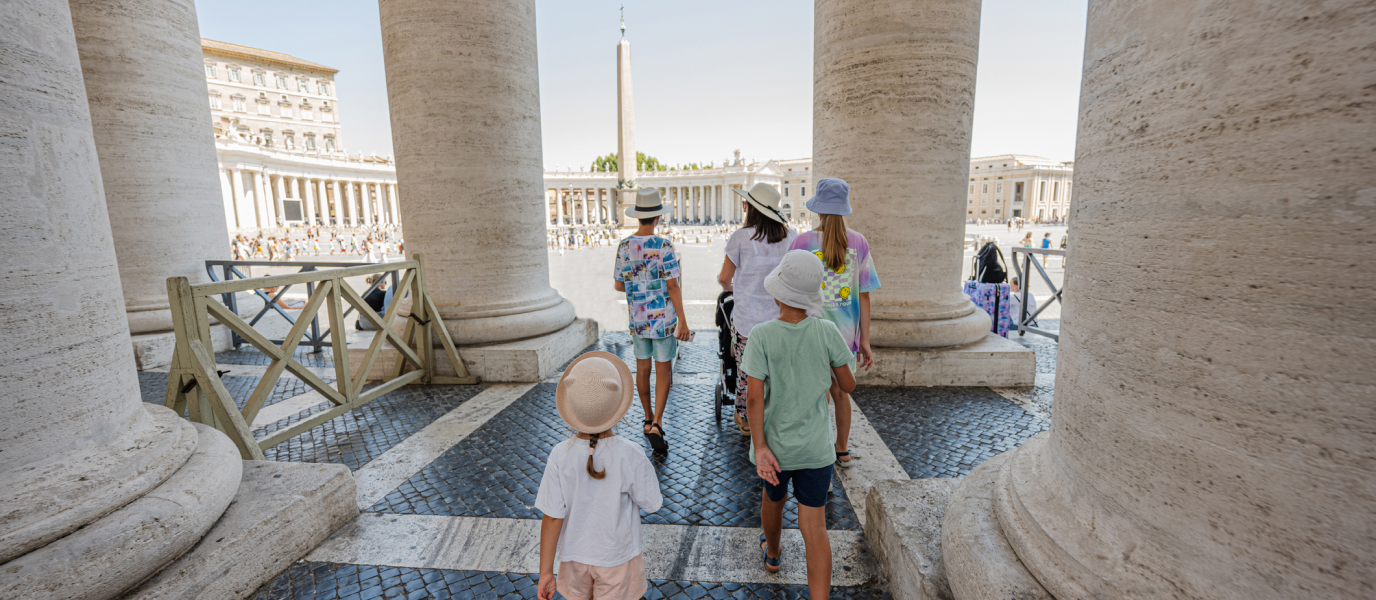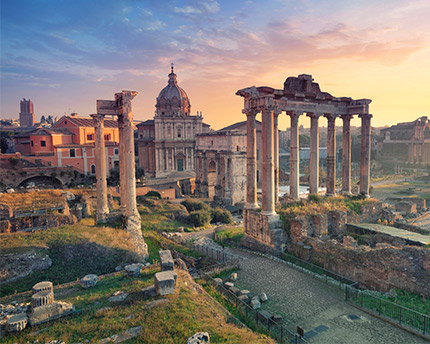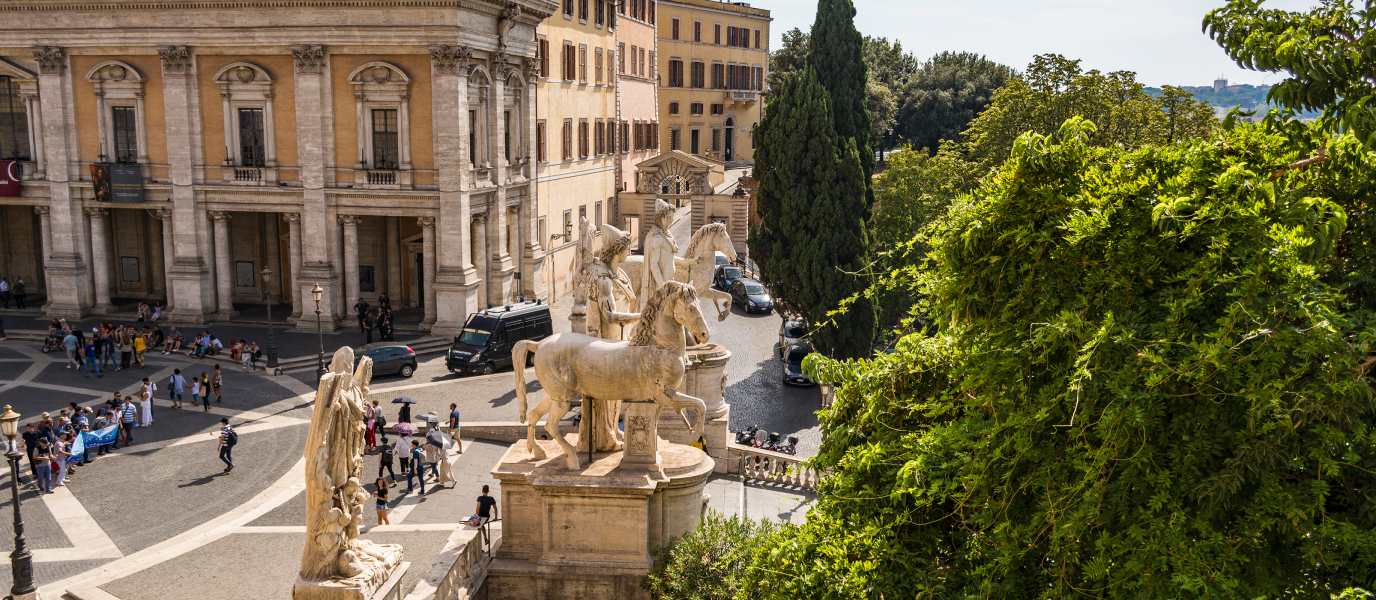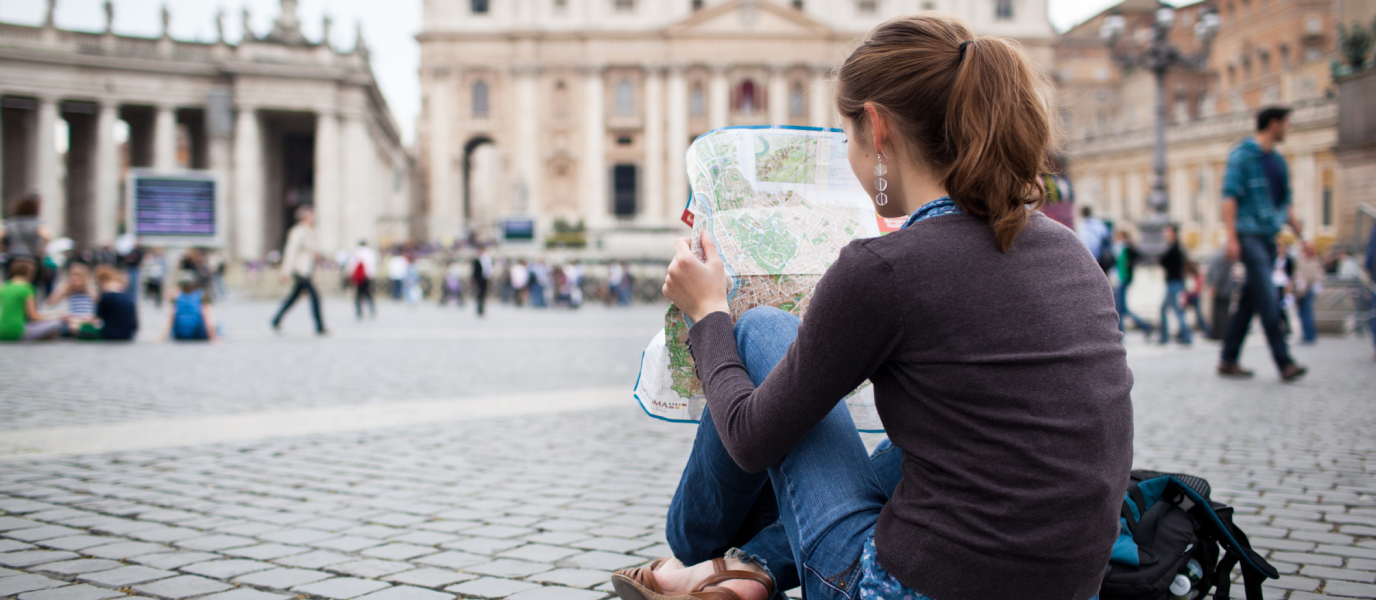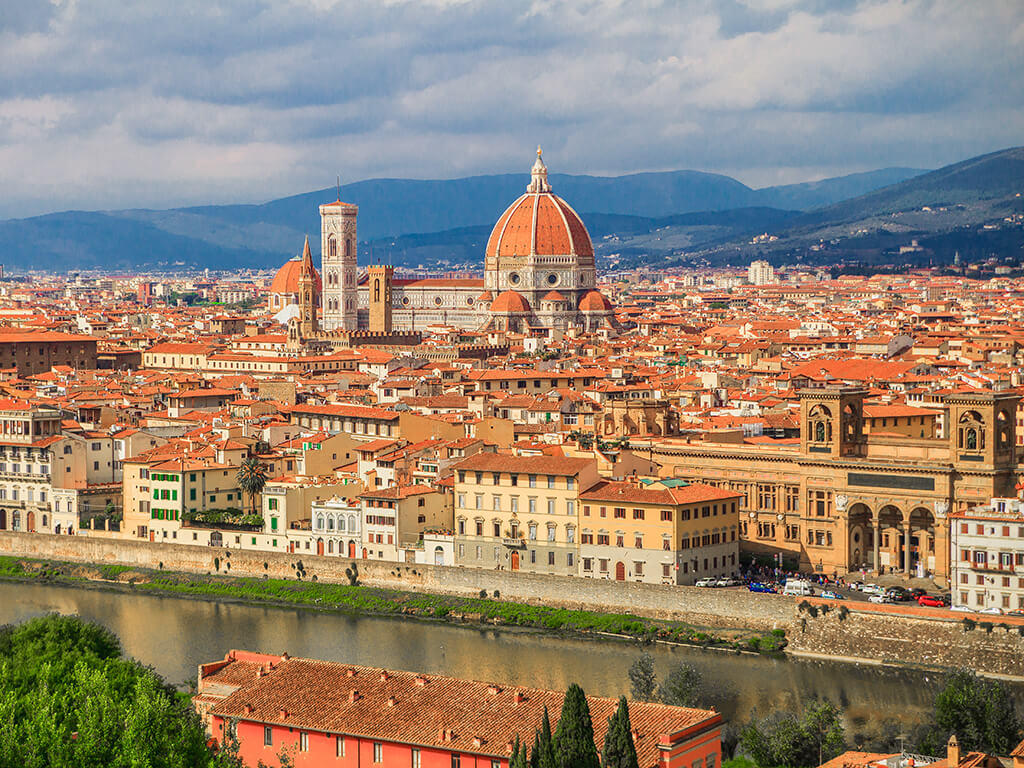Thousands of years of history lie beneath Rome’s cobbled streets. Excavation works continue to unearth ancient treasures which provide us with a greater understanding of the oldest parts of Roman culture, though experts believe that a mere 5% of the city’s underground has been fully explored.
The ground level of Rome is believed to have risen between 5 and 20 metres since the city was first founded. This means there are different underground layers which reflect the most significant social, political and religious changes throughout the centuries. Underneath Rome’s churches, it’s fairly common to uncover ancient temples raised in honour of the Roman gods, Byzantine remains, or necropolises with Christian and pagan tombs. St Peter’s Basilica is no different. Here, the tomb of the apostle shares a final resting place with hundreds of slaves, rich commoners and ancient pagan buildings. You won’t see a single cross or dove (Christian symbols found in the catacombs), but rather satyrs and maenads dancing frenetically by Dionysus, the sun god riding his chariot, and the Egyptian god of the dead guarding the entrance to some of the mausoleums.
From Etruscan cemetery to the largest basilica in the world
To get a real understanding of the necropolis, we have to go back to centuries before Rome was founded, to the time of the Etruscans. This civilisation usually buried its dead beyond the city walls and built a necropolis on a nearby hill, guarded by the goddess Vatika. Some theories maintain that a hallucinogenic grass grew on the hill. It too was called vatika (Latin for ‘hallucination’ or ‘prophesy’), and the village on the hill was called Vaticum. All versions suggest that Vatican Hill was first inhabited by the Etruscans and had nothing to do with Christianity.
After Etruscan civilisation fell to the Romans, the Vatican territory became part of the city of Rome. The area remained largely intact until Caligula built a circus (eventually completed by Nero) which the Romans used not only for horse races and games, but for Christian martyrdoms (after all, it was conveniently close to the necropolis). A huge Egyptian obelisk was raised in the centre of the circus. Today, it stands in the centre of Piazza San Pietro.
St Peter was crucified by Nero in this same circus between 64 and 67 AD and was later interred in the necropolis. The tomb became a pilgrimage site. After the Edict of Milan in the year 313, which allowed free religious choice in the Empire, Constantine the Great (himself converted to Christianity) ordered that a commemorative basilica be built. The necropolis was excavated to make way for the foundations of the new church, leaving it beneath floor level and burying hundreds of funeral chambers under rubble. The works took 30 years and the new construction soon became the venue for papal coronations.
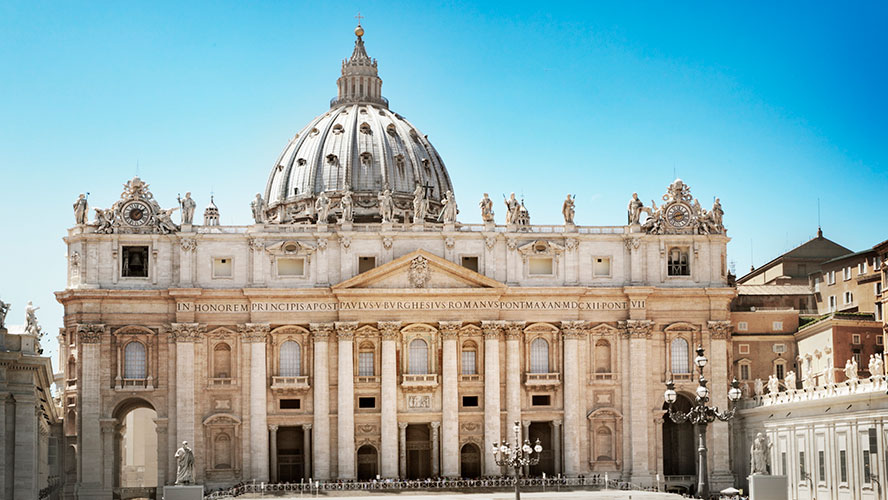
The Vatican catacombs and grottoes beneath St Peter’s Basilica
In 1506, Pope Julius II began a building project that would take more than a century to complete: the new St Peter’s Basilica. It would have a Latin cross floor plan, measure 218 metres long and have the highest dome in the world at 136 metres. The dome itself was decorated with the most impressive art and mosaics of the time. However, there was something missing from the basilica: the tomb of St Peter. Excavation works to locate the remains of the apostle took place during the 20th century and were complicated by the fact that the basilica has two levels. The ancient necropolis lies in the deepest layer, which stretches from 5 to 12 metres below floor level. In the upper layer, 3 metres below ground, are the Vatican grottoes, a church-like necropolis with three naves (complete with burial niches), passages and chapels all located atop the ancient necropolis at floor level with the basilica raised by Constantine the Great. The grottoes were built to satisfy the wishes of the popes who wanted to be laid to rest next to St Peter. All of this meant that finding the saint’s resting place was no easy task.
The tomb of St Peter, a hugely important discovery beneath the Vatican
Excavation works below the Vatican have so far uncovered a total of 22 mausoleums within a 100-metre stretch, all connected by a central passage and heavily adorned with mosaics, paintings and beautiful sarcophagi. This hidden part of Rome has centuries of history bringing together a strange and incredible combination of rites and religions. Bones and ashes rest in peace amid Christian iconography, such as laurel crowns or Jonah being swallowed by the whale, as well as pagan images including the Rape of Persephone, the goddess Minerva and the god Jupiter. There are countless niches, urns and sarcophagi, though Mausoleum P is the most important finding.
A decade after the excavations began, the pieces of the puzzle started to come together. Beneath the papal altar is the Trophy of Gaius, the first primitive chapel raised over the tomb of the apostle after his death. This, in turn, is surrounded by the protective Red Wall, built in 145 AD. Another wall, known as Wall G, was built in the year 250 to provide stability. Various inscriptions and graffiti were found there, and everything suggested that this was a highly revered site. Hopes were raised of finding the apostle’s grave. However, there was no trace of Peter’s remains in the chapel’s burial niche.
The answer didn’t come until the discovery of a marble niche in Wall G. The evidence suggested that Constantine the Great had moved the remains from the first niche to the new church in the 4th century, where they lay wrapped in a purple shroud with gold thread. It wasn’t until 1952 that a fragment of the Red Wall provided definitive evidence. The description in Greek lettering reads: ‘Peter is inside’.




































































